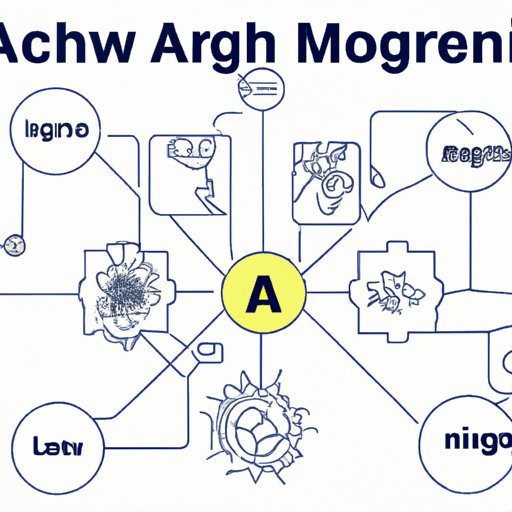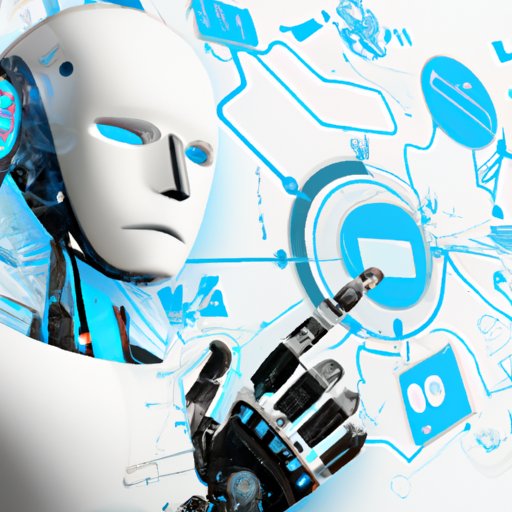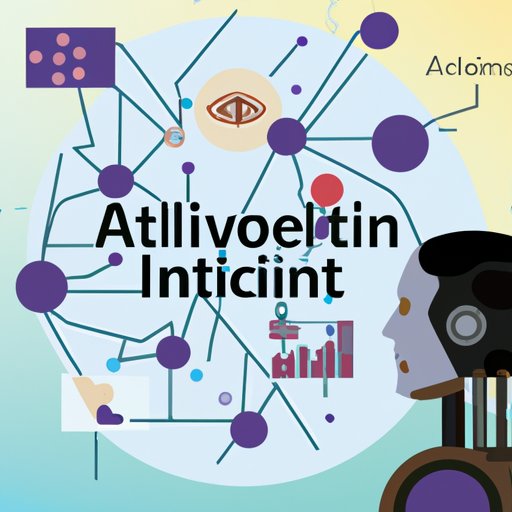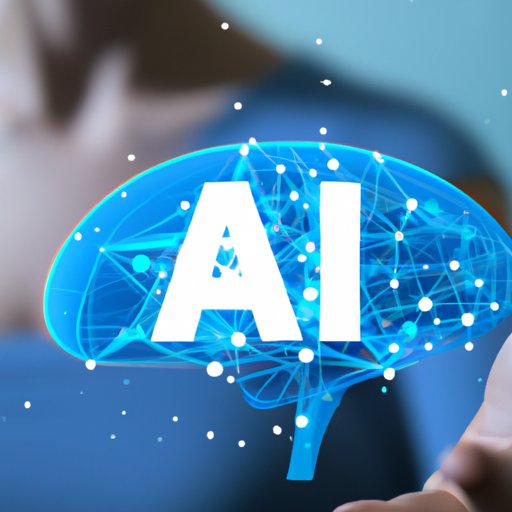Introduction
Artificial intelligence (AI) is a rapidly growing field that has gained widespread attention in recent years. It involves using computer systems to simulate human intelligence, often with the goal of autonomously performing tasks or making decisions. AI is an incredibly complex subject, requiring a deep understanding of computer science, mathematics, and engineering. In this article, we’ll explore how AI is made, looking at the components, applications, and impacts of AI technology.
Exploring the Components of Artificial Intelligence
At its core, AI is composed of three primary components: algorithms, machine learning, and robotics. Algorithms are sets of instructions used to solve problems, while machine learning involves using data to train algorithms to make decisions. Robotics involves building machines that can interact with their environment and perform specific tasks. Together, these components form the foundation of AI technology.

How AI Algorithms and Machine Learning Work
Algorithms are the backbone of AI technology. They are sets of instructions that tell a computer system what steps to take in order to solve a problem. For example, a navigation algorithm might tell a self-driving car how to get from point A to point B by evaluating the best route based on traffic conditions. Algorithms can be simple or complex, depending on the task they are designed to accomplish.
Machine learning is a type of AI technology that uses data to train algorithms to make decisions. This process involves feeding large amounts of data into an algorithm, which then “learns” from the data and makes predictions about future outcomes. For example, a machine learning algorithm might be used to identify objects in an image by recognizing patterns in the data. The more data the algorithm is exposed to, the better it becomes at making accurate predictions.

Examining the Role of Robotics in Artificial Intelligence
Robotics is an important component of AI technology. By building machines that can interact with their environment and complete specific tasks, robotics helps to enhance AI algorithms and machine learning. For example, robots can be used to collect data from the environment, allowing AI algorithms to receive real-time information and make more accurate predictions. Robotics also enables machines to act autonomously, allowing them to perform tasks without direct human intervention.
Robotics is being used in a variety of applications, from manufacturing to healthcare. For instance, robots are being used to automate manufacturing processes, such as assembling parts or painting products. In healthcare, robots are being used to assist in surgeries and deliver medication to patients. As robotics technology continues to advance, it will play an increasingly important role in the development of AI.
Investigating the Impact of AI on Human Intelligence
As AI technology progresses, it is having a profound impact on human intelligence. AI algorithms are able to outperform humans in many tasks, such as playing chess or identifying objects in images. This has led to increased efficiency and accuracy in a variety of industries, from finance to healthcare. Additionally, AI technology can be used to augment human intelligence, allowing people to think faster and more creatively.
However, there are potential risks associated with AI technology. AI algorithms can be biased if they are not trained on diverse data sets, leading to inaccurate decisions. Additionally, AI technology could lead to job automation, resulting in fewer job opportunities for humans. It is important to understand the potential risks of AI technology and take steps to mitigate them.

Understanding the Future of AI Technology Development
The future of AI technology is bright. According to a survey conducted by Deloitte, over 80% of executives believe AI will have a significant impact on their businesses in the next five years. As AI technology continues to advance, it will become increasingly integrated into our lives, from driverless cars to voice-controlled home assistants.
Additionally, AI technology is becoming more accessible. Companies like Google and Amazon are making AI tools available to developers, allowing them to create powerful applications with ease. As AI technology becomes more widely available, it will open the door to new possibilities and opportunities.
Finally, AI technology is becoming increasingly sophisticated. Researchers are developing new algorithms and techniques that will enable machines to think and act more like humans. This includes natural language processing, which allows machines to understand and respond to human speech, and reinforcement learning, which allows machines to learn from their mistakes. These advances will help to further enhance the capabilities of AI technology.
Conclusion
Artificial intelligence is a rapidly growing field that has gained widespread attention in recent years. It involves using computer systems to simulate human intelligence, often with the goal of autonomously performing tasks or making decisions. AI is composed of three primary components: algorithms, machine learning, and robotics. AI algorithms and machine learning allow computers to make decisions based on data, while robotics enables machines to interact with their environment and complete tasks autonomously. AI technology has a variety of applications and can have both positive and negative impacts on human intelligence. As AI technology continues to advance, it will open the door to new possibilities and opportunities.
(Note: Is this article not meeting your expectations? Do you have knowledge or insights to share? Unlock new opportunities and expand your reach by joining our authors team. Click Registration to join us and share your expertise with our readers.)
